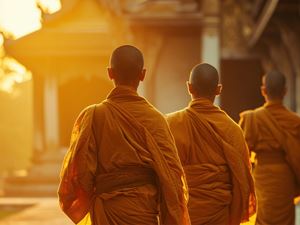
Every major world religion, if lived properly, functions as a life-philosophy. Yes, religions offer systems of belief—which typically include specific doctrines, canonical books, rites or sacraments, often dietary laws, and they frequently incorporate the wearing of specific articles of symbolic clothing. However, beyond each of those common components, a religion that is impactful necessarily must influence the day-to-day life of the practitioner; and that is where religion and philosophy merge. In this regard, Buddhism is no different.
From its origins, in the 6th century BCE, Buddhism has taught certain theological principles, about God, the afterlife, the meaning and purpose of life, and even what constitutes karma promoting (or sinful) behavior. However, beyond each of those religious components, Buddhism has always taught how one should live and think. It has strongly encouraged its practitioners to question the lenses through which they see the world; to cast off “maya” (i.e., “illusion” or false beliefs)—and to see things as they really are. For Buddhism, it is not enough to simply “believe” the doctrinal teachings of the Buddha, Sidhartha Gautama. Rather, Buddhism emphasizes that enlightenment requires both belief in true principles (or doctrines) and the practice of true behaviors (or one’s Buddhism-influenced life-philosophy).
Of course, one might argue that certain denominations of Buddhism are more philosophical and others more religious.
Similarly, like any life-philosophy (or truly functional religion), Buddhism influences the day-to-day life of the practitioner. Indeed, whereas many religions might influence certain aspects of the daily life of the believer, Buddhism—because of its foundational doctrine of “mindfulness”—is designed to influence every minute of every day of the life of the practitioner; assuming the believer is fully engaged in the teachings and practices of his or her faith tradition.
So, yes, Buddhism is a religion, in the proper sense of the word; and it is also a life-philosophy, or philosophical approach to traversing mortality. However, technically speaking, the Buddha himself would most likely have been very uncomfortable with bifurcating these two. For Sidhartha, Buddhism needed to be both religious and philosophical. Indeed, upon his enlightenment, he discovered what he called the “eight-fold middle path.” That “path” taught that enlightenment and the attainment of Nirvana can only be achieved by avoiding extremes. There is a “middle path” which leads to the truth, to enlightenment, to the end of reincarnation, and to heaven (or “Nirvana”). And, for the Buddha, that “middle path” would almost certainly require that a Buddhist live both the religion of Buddhism and the philosophical lifestyle taught by Buddhism. Any other approach risks an imbalance in the pursuit, which would certainly prevent the achievement of life’s ultimate goal of enlightenment and Nirvana.
5/29/2024 2:23:08 AM









